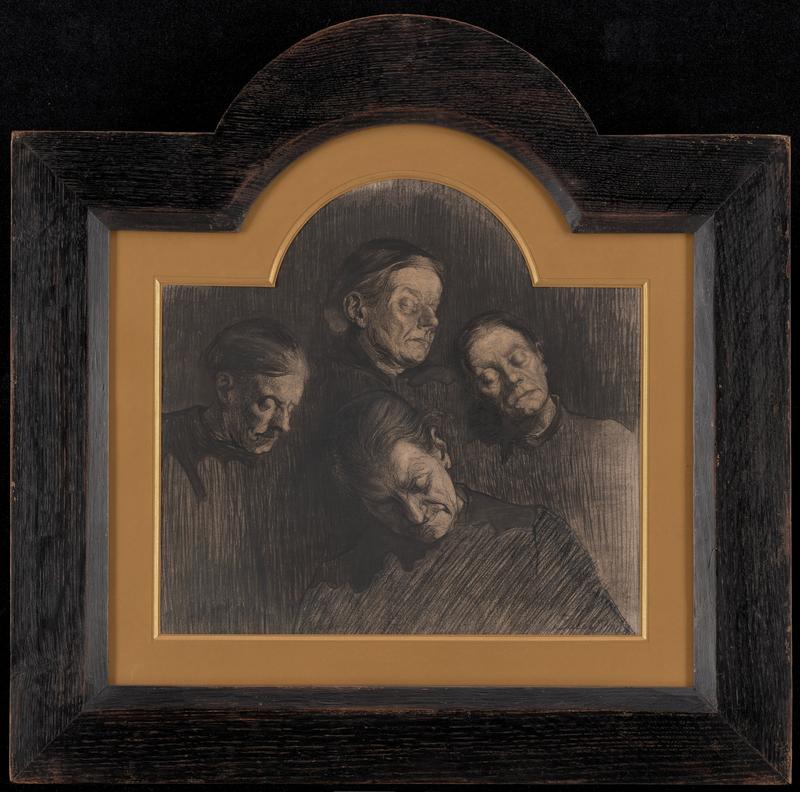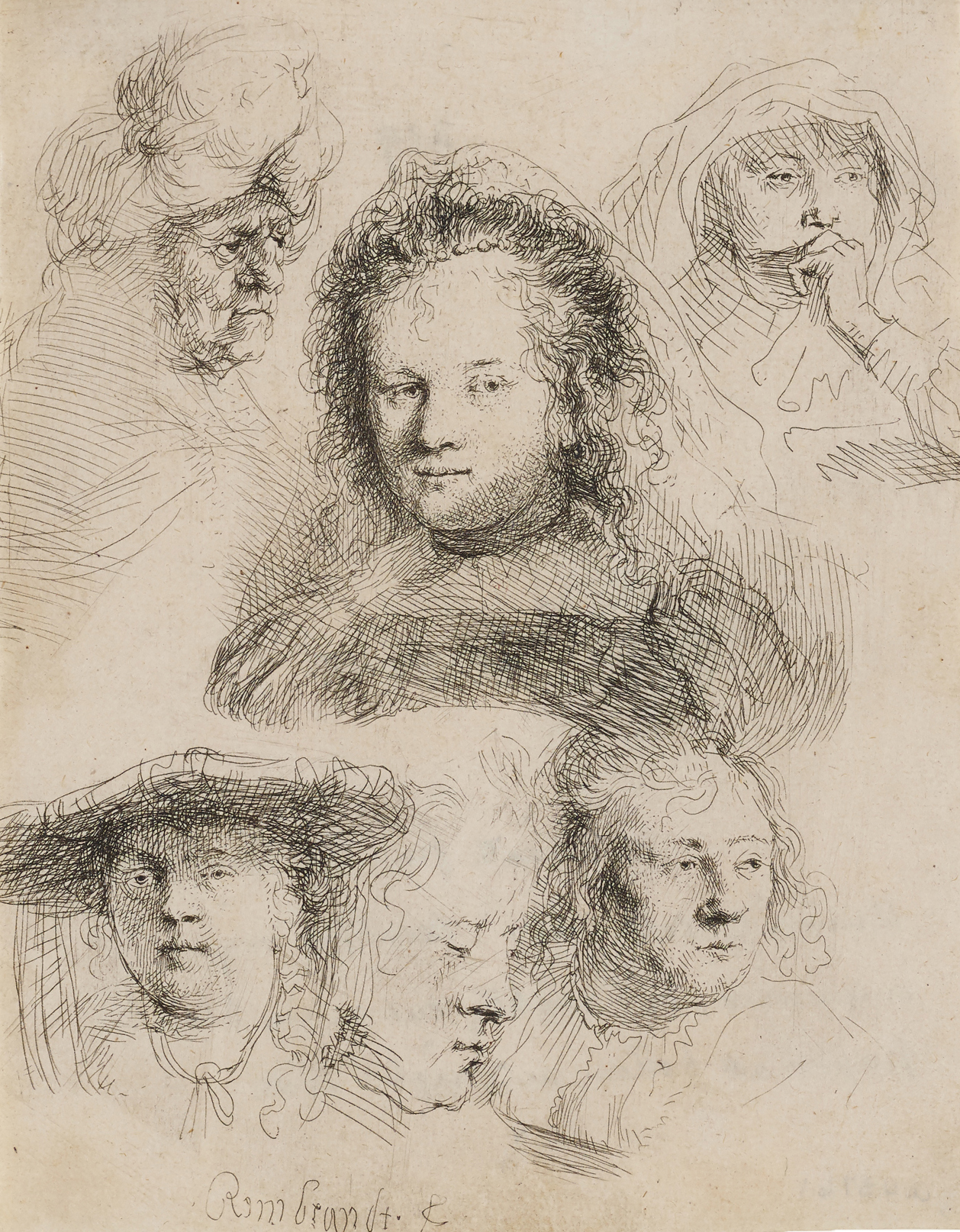
176. Jakob Smits, Four Studies of the Same Woman
| Artist | Jakob Smits, Belgian (born Netherlands), Rotterdam 1855–Achterbos, Belgium 1928 |
| Title, Date | Four Studies of the Same Woman, 1889 |
| Medium | Charcoal |
| Dimensions | 14 15/16 × 16 5/16 in. (38 × 41.5 cm) |
| Inscriptions + Marks | Lower right: Jakob Smits (recto) | Jakob Smits / 1889 (verso) |
| Provenance | [Mathieu Néouze, Paris, until 2016; to Weisberg]; Yvonne and Gabriel Weisberg, Minneapolis |
| Exhibition History | "Reflections on Reality: Drawings and Paintings from the Weisberg Collection," Mia, 2022–23 |
| References | "Oeuvres sur papier 1880–1930" (exh. cat.), Mathieu Néouze, Paris (March 2016), no. 3, ill. |
| Credit Line | Promised gift of Gabriel P. and Yvonne M.L. Weisberg, Minneapolis |
The work of Jakob Smits has been described as primitive, crude, and unpolished.1 This drawing, comprising four studies of the same woman, challenges such assessments. The work is deeply rooted in the history of Dutch art. The format stems from that of a model-book or sketchbook, a tradition alloyed with etching 250 years earlier by Rembrandt (fig. 1).2 In the present drawing, Smits exploited the dramatic chiaroscuro contrasts associated with Rembrandt as well.

Trained in his father’s decoration company in Rotterdam, Smits continued to study painting at the local art academy, then in Brussels, Munich, Vienna, and Rome. Like many naturalists, he eventually moved to the countryside. Two Dutch artists, Anton Mauve (1838–1888) and Albert Neuhuys (1844–1914), introduced him to the Campine, an area mainly in northeastern Belgium. Taken by the landscape, Smits settled there in 1888, in the village of Achterbos. He completed this drawing the following year. It shows his affinity for French naturalist painters, such as Théodule Ribot (cat. nos. 161–167) and Jules Bastien Lepage. Smits’s work conveys the impression of silence, a trait found in works by Ribot.
In Achterbos, Smits focused on the simple pleasures of existence. He followed a personal piety that led him to shed material gains and live in poverty. His ideology may have resulted, in part, from a need to make the best of a bad situation, since an earlier divorce had made him something of a social outcast.
Here, Smits showed the head of his model—probably a local woman—in four poses. Her eyes are closed, as if she is sleeping or more likely absorbed in prayer. The study remains one of Smits’s most intimate yet powerful creations. In it one senses his sincere commitment to the simple life of the people of the Campine.
GPW
Notes
Benezit Dictionary of Artists, https://doi.org/10.1093/benz/9780199773787.article.B00171255 ↩︎
Bartsch 358 and 365. ↩︎